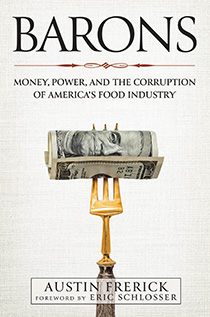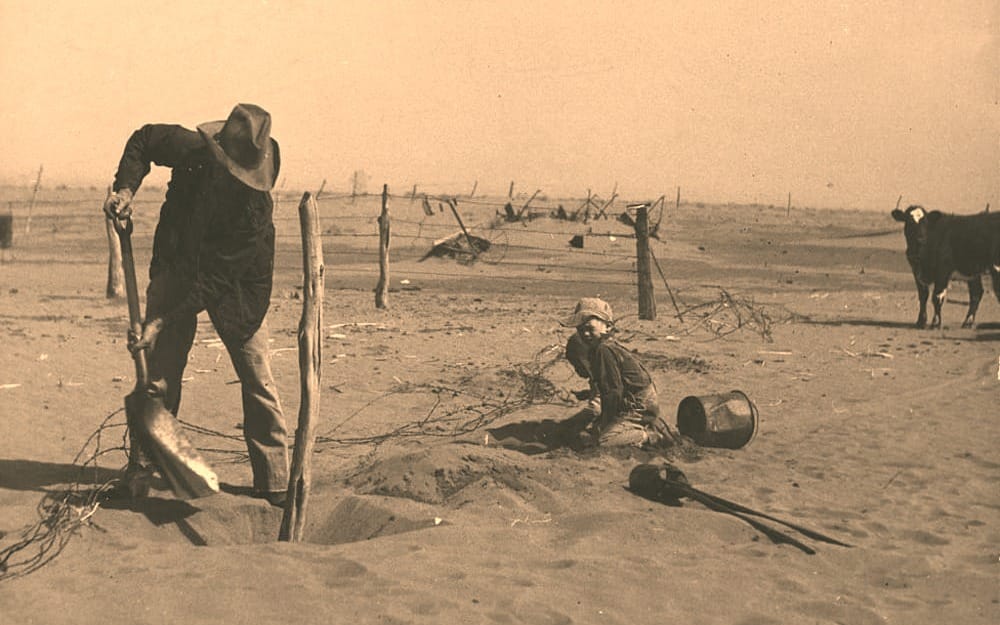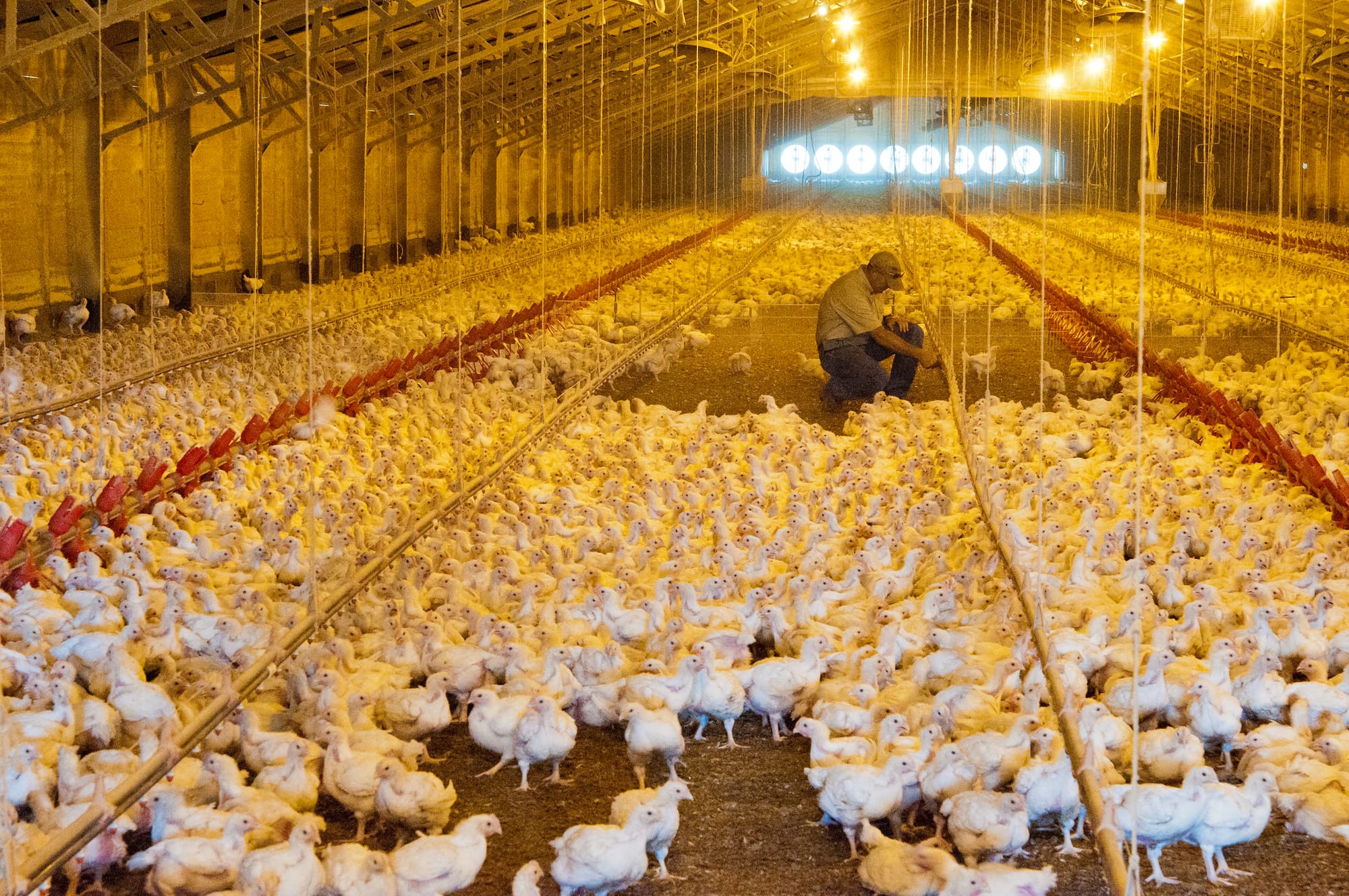Strategic Overview - Revolution America: MAGA is Pro-Growth not Libertarian - July 8, 2025
Join Kesha Rogers and Michael Steger in an illuminating discussion on the latest political developments. They cover President Trump’s

You walk into a grocery store these days to purchase food for yourself and your family and the receipt is enough to take your breath away. And what do you get: food that is tasteless, highly processed, and nutritionally questionable. You might think that the family farmer is making a killing in this market, but they’re not. In the last 50 plus years, with the able assist of federal and state legislatures and agencies, the agriculture sector has been consolidated and cartelized, drastically reducing the number of family farms across America, while maximizing the margin of profit for the cartel. Many farmers still in business are at the mercy of these cartels for everything from seed stock to harvest, feed to livestock market.

Barons: Money, Power, and the Corruption of America’s Food Industry
In a recently published book, Barons: Money, Power, and the Corruption of America’s Food Industry (Island Press, 2024), Austin Frerick, author and Yale University fellow, presents a compelling picture of the assault on agriculture and the American farmer, and some of the culprits behind this assault. He often allows his political prejudices to get the better of him as he tries to pin the problems in agriculture on some Republican villain du jour. But what Frerick presents shows clear bipartisan cooperation in transforming U.S. agriculture into a highly consolidated and cartelized sector.
America’s farm sector has long been subject to the whims of the market. In 1920, the farm sector was thriving, driven by demands for food exports to war-ravaged Europe. But by summer, corn prices had fallen by 78 percent, cotton by 57 percent, and wheat by 64 percent, bankrupting and consolidating family farms. By 1933, one out of 4 family farms were sold. Without price supports or guiding tax and credit policy, farmers had overfarmed and overgrazed, exposing the topsoil of the Great Plains. With the droughts of the 1930s came the Dust Bowl. With the Depression of the 1930s came farm foreclosures.

The Franklin Roosevelt Administration intervened:
But, already, there were profound changes being made in agricultural commodity production and distribution. What was termed the “Southern Model” began in the 1940s to be introduced into poultry production. Here, a corporation controls almost every aspect of the production chain–vertical integration. Soon, family poultry farms would be replaced by large warehousing concerns–think Purdue or Tysons. And the model would spread to other areas of agricultural production, particularly pork and dairy. Frerick cites statistics that show that, since 1982, the U.S. has lost 80 percent of its dairies, 90 percent of its hog farms, and 50 percent of its beef cattle ranches. And rare is the package of fruit these days not marketed by Driscolls.
In 1942, an executive order established the Bracero Program, allowing millions of Mexican men to work in the U.S. on short-term labor contracts. Migrant labor would begin to dominate the farm fields, livestock warehouses, and meat processors. NAFTA, in 1994, would open Mexico to U.S. grain exports, undermining their farmers, and forcing many to migrate for farm jobs in the U.S. –jobs with dramatically reduced health and safety protections.
In the reauthorization of the Farm Bill in 1958, the US Department of Agriculture was reorganized, its message to farmers becoming: Get Big, or Get Out. Slaughterhouses began in 1961 to shift out of urban areas to rural locations, creating company towns, undermining unions, and consolidating meat processing and packing. By 2019, according to Frerick, only 21 percent of all cattle destined for slaughter are bought on the open market; four very large multinational companies today control meat processing: JBS, American Beef, Tyson, and Cargill. Subsequent reauthorizations would pare back the program to pay farmers not to overplant.
What was left of the New Deal legislation was repealed in 1996 and replaced by the Federal Agriculture Improvement and Reform Act. Subsidies were redirected to incentivize overproduction of some key commodities, like corn and soy. This brought us ethanol, monoculture, subsidized cheap feed for industrial farms, highly processed foods, and grain-derived products. Monoculture–bad for soil, bad for agriculture–and the removal of price supports and protections for family farmers led to more bankruptcy and consolidation. Unsurprisingly, Cargill led the lobbying for this bill.

One of the more inconvenient facts of these industrial farms in the age of climate change hysteria is that, when you pack livestock into warehouses, a means has to be found for disposing waste. For example, on a pasture-based dairy farm, manure is a natural fertilizer that breaks down slowly through aerobic decomposition, releasing carbon dioxide and little methane. But, as Frerick describes, at an industrial dairy farm, manure is stored in a pit or lagoon, decomposing in anaerobic conditions and releasing methane. Under the Green New Deal, $200 million was expended in 2021 alone to encourage the use of “manure digesters'' on factory dairy farms.
Food is central to a nation’s security and, yet, the U.S. has allowed family farms to shut down, has knocked parity price supports out from underneath the family farmer, and has allowed practices that threaten crops, livestock, soil, and groundwater. The American farmer, like the American entrepreneur, is what drives the American economy. They take pride in their crops and their livestock. They are better equipped to husband the resources of land, water, and air than any environmental engineer. It is past time to acknowledge the support farmers need to produce food that is plentiful and nutritious, with enough profit to reinvest in the technology to improve that production. Economist Lyndon LaRouche made parity price support the centerpiece of his economic program for America, in all his presidential campaigns.
The Republican Party Platform for 2024 commits to making America a manufacturing superpower and agriculture is, emphatically, a part of that. Donald Trump understands that and that is why farmers across America voted for him in the 2016 and 2020 elections, and will, no doubt, vote for him again.
Get our free newsletter. Zero Spam.